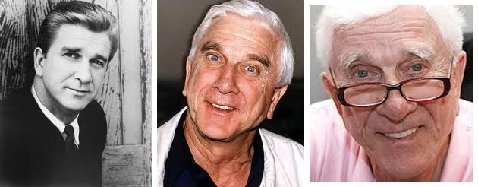Yesterday we topped at 65º.
A lighthouse is a tower, building, or other type of physical structure designed to emit light from a system of lamps and lenses and to serve as a beacon for navigational aid, for maritime pilots at sea or on inland waterways.
Lighthouses mark dangerous coastlines, hazardous shoals, reefs, rocks, and safe entries to harbors; they also assist in aerial navigation. Once widely used, the number of operational lighthouses has declined due to the expense of maintenance and has become uneconomical since the advent of much cheaper, more sophisticated and effective electronic navigational systems.
Ancient lighthouses
The Tower of Hercules lighthouse in northwest SpainBefore the development of clearly defined ports, mariners were guided by fires built on hilltops. Since elevating the fire would improve visibility, placing the fire on a platform became a practice that led to the development of the lighthouse. In antiquity, the lighthouse functioned more as an entrance marker to ports than as a warning signal for reefs and promontories, unlike many modern lighthouses. The most famous lighthouse structure from antiquity was the Pharos of Alexandria, Egypt, which collapsed following a series of earthquakes between 956 CE and 1323 CE.
The intact Tower of Hercules at A Coruña, Spain gives insight into ancient lighthouse construction; other evidence about lighthouses exists in depictions on coins and mosaics, of which many represent the lighthouse at Ostia. Coins from Alexandria, Ostia, and Laodicea in Syria also exist.
Modern lighthouses
The introduction of electrification and automatic lamp changers began to make lighthouse keepers obsolete. For many years, lighthouses still had keepers, partly because lighthouse keepers could serve as a rescue service if necessary. Improvements in maritime navigation and safety such as satellite navigation systems such as GPS led to the phasing out of non-automated lighthouses across the world.[18] In Canada, this trend has been stopped and there are still 50 staffed light stations, with 27 on the west coast alone.
Remaining modern lighthouses are usually illuminated by a single stationary flashing light powered by solar-charged batteries mounted on a steel skeleton tower. Where the power requirement is too great for solar power, cycle charging by diesel generator is used: to save fuel and to increase periods between maintenance the light is battery powered, with the generator only coming into use when the battery has to be charged.
Famous lighthouse builders
John Smeaton is noteworthy for having designed the third and most famous Eddystone Lighthouse, but some builders are well known for their work in building multiple lighthouses. The Stevenson family (Robert, Alan, David, Thomas, David Alan, and Charles) made lighthouse building a three-generation profession in Scotland. Richard Henry Brunton designed and built 26 Japanese lighthouses in Meiji Era Japan, which became known as Brunton's "children". Blind Irishman Alexander Mitchell invented and built a number of screw-pile lighthouses. Englishman James Douglass was knighted for his work on the fourth Eddystone Lighthouse.
United States Army Corps of Engineers Lieutenant George Meade built numerous lighthouses along the Atlantic and Gulf coasts before gaining wider fame as the winning general at the Battle of Gettysburg. Colonel Orlando M. Poe, engineer to General William Tecumseh Sherman in the siege of Atlanta, designed and built some of the most exotic lighthouses in the most difficult locations on the U.S. Great Lakes.
French merchant navy officer Marius Michel Pasha built almost a hundred lighthouses along the coasts of the Ottoman Empire in a period of twenty years after the Crimean War (1853–1856).
Power
Originally lit by open fires and later candles, the Argand hollow wick lamp and parabolic reflector were introduced in the late 18th century.
Whale oil was also used with wicks as the source of light. Kerosene became popular in the 1870s and electricity and carbide (acetylene gas) began replacing kerosene around the turn of the 20th century. Carbide was promoted by the Dalén light which automatically lit the lamp at nightfall and extinguished it at dawn.
In the second half of the 20th century, many remote lighthouses in Russia (then Soviet Union) were powered by radioisotope thermoelectric generators (RTGs). These had the advantage of providing power day or night and did not need refuelling or maintenance. However, after the collapse of the Soviet government in 1990s, most of the official records on the locations, and condition, of these lighthouses were reportedly lost. Over time, the condition of RTGs in Russia degraded; many of the fell victim to vandalism and scrap metal thieves, who may not have been aware of the dangerous radioactive contents.
Energy-efficient LED lights can be powered by solar panels, with batteries instead of a diesel generator for backup.
If you want to read a whole lot more, go here : https://en.wikipedia.org/wiki/Lighthouse
And If you want to read the whole list of lighthouses in the United States, go here: https://en.wikipedia.org/wiki/List_of_lighthouses_in_the_United_States
- SERVES
- 6
- CHILL TIME
- 1 Hr
- COOK TIME
- 45 Min
This is the easiest breakfast casserole you'll ever make. No, really. Thanks to some shortcut frozen ingredients, this Make-Ahead Breakfast Casserole can be put together in no time. And since it's a make-ahead casserole, you can make it an hour in advance or even a day in advance!
- 6 frozen waffles, cut into 1-inch cubes
- 1 (9.6-ounce) package frozen sausage crumbles, thawed
- 1 cup shredded sharp Cheddar cheese, divided
- 6 eggs
- 1 1/4 cup milk
- 1/2 teaspoon salt
- maple syrup (optional)
- Coat an 8-inch square baking dish with cooking spray. Layer half of waffles on bottom of prepared dish. Top with half of sausage crumbles and 1/2 cup of cheese. Repeat layer.
- In a medium bowl, whisk eggs, milk, and salt until well combined. Pour egg mixture evenly over waffle mixture.
- Cover baking dish with plastic wrap. Refrigerate at least 1 hour, or overnight.
- Before serving, preheat oven to 350º.
- Bake 45 to 50 minutes, or until eggs are set in center. Drizzle with syrup and serve.
National Inventors’ Day honors inventors of the past, the creators of the present, and encourages the architects of the future. On February 11th, National Inventors’ Day celebrates the genius behind design. It also dives into the history behind some of our most unusual inventions.
What do Ermal Fraze, Thomas Adams, Melitta Bentz, Patricia Beth, and Stephen Perry all have in common? They are recognized annually on February 11th, along with the Wright brothers, Thomas Edison, George Washington Carver, and Elisha Otis.
Thanks to inventors, we can safely ride in an elevator, have a well-lit room at the flip of a switch, speak to someone on the other side of the world or efficiently pump lotion from a bottle. Many inventors go their whole life without recognition for their creations, while others are household names. Nearly everything around us results from someone tinkering in their garage, laboratory, or basement trying to find a solution to a problem.
Some inventions may be happy accidents by an observant person; the microwave oven, penicillin, sticky notes, and bubble wrap may never have made their way into their current use if it were not for sharp or persistent inventors.
The proverb “Necessity is the mother of invention” says a lot about how inventors look at life. They are a progressive, forward-thinking bunch. Where would we be without pacemakers, traffic signals, rubber bands, or coffee filters?
Though there are some inventions that we may be better off without. A DVD re-winder doesn’t quite fit the necessary criteria. Or, they are otherwise too impractical. For example, tugging around a stroller fridge for your watermelon along with the cooler and beach umbrella seems to be a bit of overkill. Still, without inventors, the world would be downright dull and much more challenging.
Inventors should keep track of their ideas, processes, ingredients, and components. Protect your inventions and get your unique creations patented.
HOW TO OBSERVE
Inventors around the country, take a bow. Keep tinkering. Keep seeking a cure, a fix, and improvements to our everyday life. Take time to recognize an inventor and encourage them to keep creating the next great invention. Other inventive ways to celebrate the day include:
- Read about inventors and inventions that changed the way we look at the world today. We recommend Mistakes that Worked by Charlotte Jones, The Idea Factory: Bell Labs and the Great Age of American Innovation by Jon Gertner, and Five Notable Inventors by Wade Hudson.
- Learn about the patent process and how to protect your ideas. Put your ideas to work for you!
- Watch documentaries about your favorite inventions. You might find out something about the inventor you never knew!
NATIONAL INVENTORS’ DAY HISTORY
In 1983, President Ronald Reagan proclaimed the first National Inventors’ Day and takes place every year on Thomas Edison’s birthday.














1 comment:
Benjamin Franklin was a model citizen. I’m sad to say, I do believe he would be dismayed at how far we’ve strayed from the ethos he devoted his energy, effort and money- plus risked his life to found.
That casserole recipe puts a smile on my face. It’s traditional Easter fare in Lutheran churches.
Congratulations to Sami for placing in competition! Her parents are exemplary in providing her with the opportunity and skills which comes with it!
Happy Super Bowl Sunday!
Post a Comment